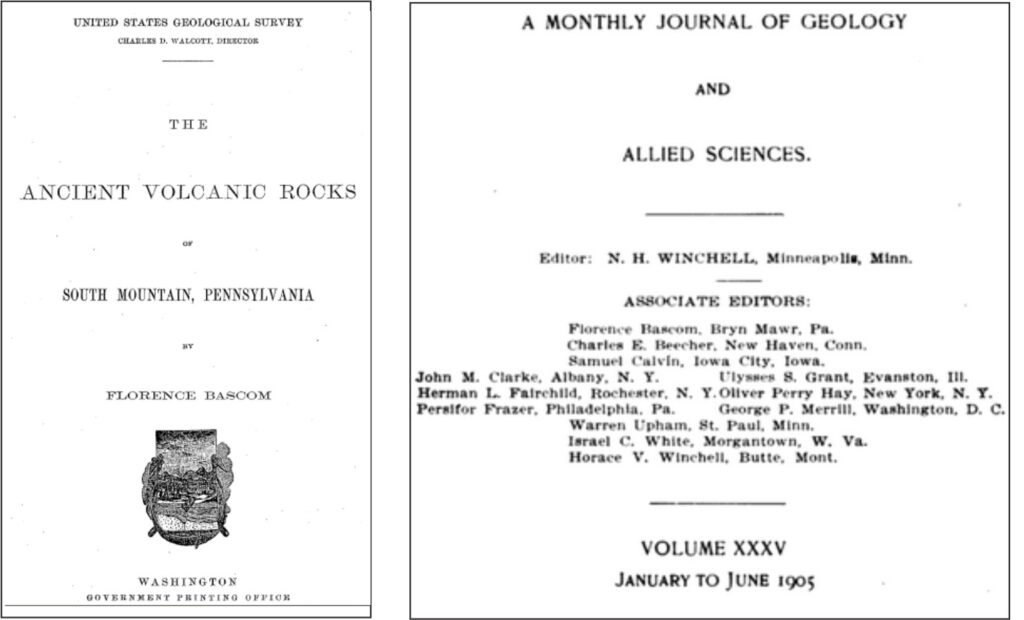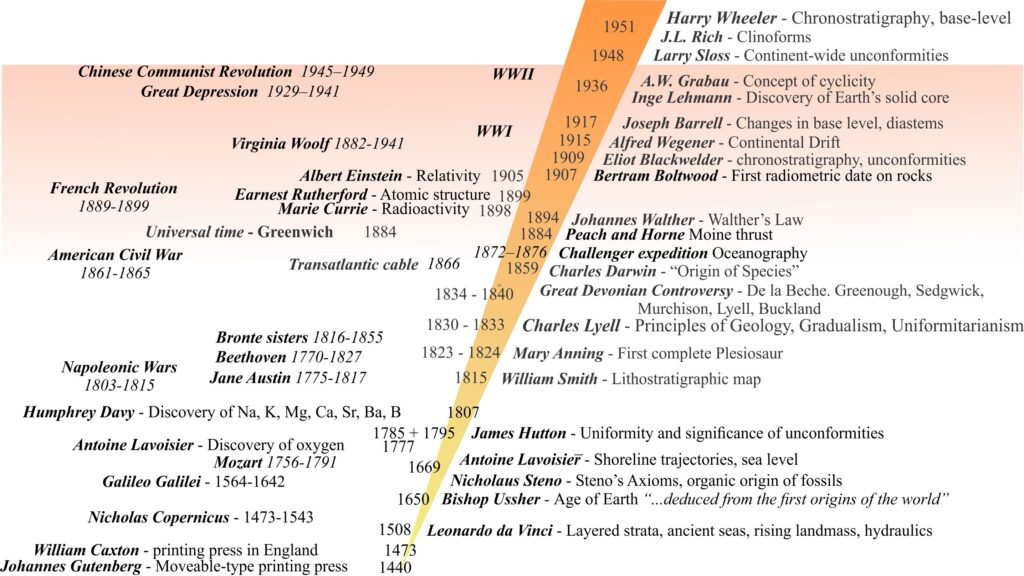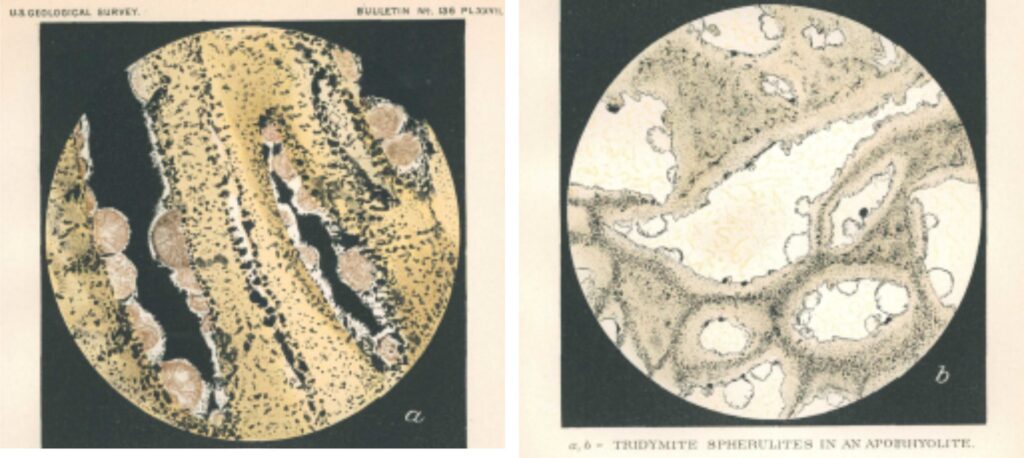
This biography is part of the series Pioneering women in Earth Sciences – the link will take you to the main page.
Jill Schneiderman’s (1997) A life of firsts: Florence Bascom is an appropriate title for the woman who championed female education in general and geological education in particular. Florence Bascom was and continues to be described with epithets like “trail blazer”, “pioneer”, “a brilliant student”, “a geologic juggernaut”.
- She was the first woman to receive a PhD from Johns Hopkins University in 1893, and the second in the entire US University system (the first was Mary Holmes in 1888 at the University of Michigan). Her thesis title “A Contribution to the Geology of South Mountain, Pennsylvania“.
- She founded the Geology Department at Bryn Mawr College in 1895, becoming full professor in 1906.
- The first woman to be hired by the U.S. Geological Survey in 1896.
- The first woman to present an oral paper to the Geological Society of Washington in 1901.
- The first woman elected to the Geological Society of America council in 1924.
- The first woman elected as vice president of the Geological Society of America in 1930.
- She was an Associate Editor for American Geologist (1896–1905).
- In 1906 she was added as a geologist to the list of 100 most influential Men of Science.
She was all these, but foremost she was a woman who successfully overcame the obstacles of not just entering a man’s world but helped to orchestrate changes to gender inequality. Her time at Johns Hopkins exemplifies these difficulties. John Hopkins president at its founding, Daniel Gilman, was vehemently opposed to coeducation. In his inaugural address he noted that women should be shielded from “the rougher influences, which I am sorry to confess are still to be found in colleges and universities where young men resort.” (quote from B. Jensen, 2024), degrees of condescension and patriarchy apparently echoed by the Board of Trustees. Her application to John Hopkins was attended by three degrees from Wisconsin (two bachelors and a masters) plus the recommendations from several prominent professors. In her application letter, she emphasized the need to use the Universities facilities to pursue the method of optical mineralogy, as a method for unravelling the geological history of rock and rock successions. Gilman eventually relented. She ultimately became a pioneer of optical mineralogy.

However, there were other roadblocks such as limited library access (trawling the isles with all those males) and classroom availability (this was also experienced at Wisconsin). In fact, it is rumoured in many descriptions of Florence’s life that in the classroom she had to sit behind a screen, (whether to protect her or the men in the class is not clear) – a rumour that has reached almost mythical proportions. The story has been challenged on the basis that there are no supporting documents from any institution (described in B. Jensen, op cit).
Bascom’s PhD thesis “A Contribution to the Geology of South Mountain, Pennsylvania” is regarded as a major contribution to Appalachian geology. She published part of the thesis in the first volume of Journal of Geology in 1893 (Bascom, 1893, open access), and as Bulletin 136 for the U.S. Geological Survey. An important part of her work involved detailed petrographic analysis using polarizing microscopes, where she expertly demonstrated that rocks earlier identified as sedimentary were metamorphosed volcanic rocks.

References and other documents
Florence Bascom papers. Documents dating from 1862-1938 that record her correspondence, time at the U.S.G.S., research, and travel. Available for research from Bryn Mawr College.
F. Bascom, 1893. The Structures, Origin and Nomenclature of the acid volcanic rocks of South Mountain. Open Access.
F. Bascom, 1896. The ancient volcanic rocks of South Mountain, Pennsylvania. U.S.Geological Survey Bulletin 136.
J. Schneiderman, 1995. A Life of Firsts: Florence Bascom. GSA Today, July 1997. PDF available
Lois Arnold, 2000. Becoming A Geologist: Florence Bascom and Johns Hopkins, 1888-1895. Earth Sciences History (2000) 19 (1): 2–25.
M. Kölbl-Ebert, 2001. On the origin of women geologists by means of social selection: German and British comparison. IUGS Episodes 2001; 24(3): 182-193. PDF available
R. M. Clary and J. H. Wandersee, 2007. Great expectations: Florence Bascom (1842–1945) and the education of early US women geologists. Geological Society, London, Special Publications, Volume 281, p, 123 – 135.
Gena Anderson, 2023. Florence Bascom, Trailblazer of the U.S. Geological survey.
B. Jensen, 2024. Geologist Florence Bascom’s stony path to becoming the first woman to receive her PhD from Johns Hopkins. John Hopkins Magazine.

















